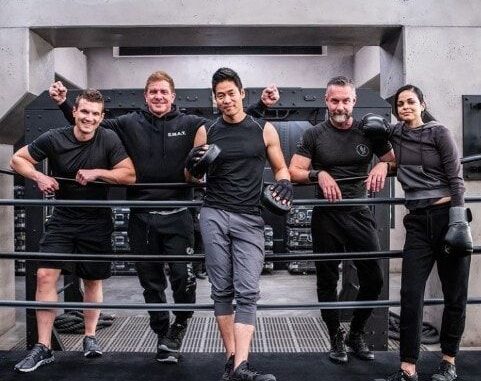
Introduction
S.W.A.T. isn’t just another action series; it’s a masterclass in teamwork and thrilling escapades. Premiering in 2017 and inspired by the 2003 film of the same name, this series captures the adrenaline of high-stakes operations while emphasizing the importance of unity among diverse team members. In this article, we’ll delve into how S.W.A.T. redefines action and teamwork on screen, blending heart-pounding sequences with compelling character dynamics.
The Genesis of S.W.A.T.
A Legacy Reimagined
Originally created by Robert Hamner, the S.W.A.T. franchise has evolved through decades. The latest iteration retains the essence of its predecessor while injecting fresh perspectives and contemporary issues.
Cultural Relevance in Action
S.W.A.T. boldly addresses current social issues, incorporating them into gripping narratives. From police reform to community relations, the show mirrors real-life challenges, making it relatable and thought-provoking.
Character Dynamics: More than Just Action Heroes
The Power of Diverse Perspectives
One of the standout features of S.W.A.T. is its ensemble cast. Each character brings a unique background, contributing to the team’s overall effectiveness. This diversity enhances storytelling and provides viewers with a multifaceted view of law enforcement.
Team Roles: Strengths and Weaknesses
- Daniel “Hondo” Harrelson: The determined leader, balancing authority and empathy.
- David “Deacon” Kay: The family man, grounding the team in personal values.
- Jessica Cortez: A strong female presence, representing intelligence and resilience.
The Importance of Trust
In S.W.A.T., teamwork isn’t just about functioning together; it’s about trust. The series beautifully illustrates how trust among team members enhances their ability to operate effectively under pressure.
Action Sequences: A New Era of Realism
Choreography that Speaks Volumes
Forget the over-the-top stunts! S.W.A.T. opts for realism. The action scenes are meticulously choreographed to reflect actual tactical operations, ensuring that viewers feel the gravity of each mission.
Engagement Through Authenticity
The attention to detail in the show’s action sequences draws viewers in. When characters face danger, you’re not just a spectator; you’re invested in their survival and success.
Sound and Cinematography: Enhancing the Experience
The series employs cutting-edge cinematography and sound design to amplify the action. Each shot is deliberate, and sound effects are immersive, ensuring that every explosion and gunshot resonates with the audience.
Emotional Depth: Balancing Action with Humanity
Personal Struggles Amidst Chaos
S.W.A.T. doesn’t shy away from exploring the personal lives of its characters. By intertwining action with emotional backstories, the show adds depth, allowing viewers to connect with the characters on a human level.
The Cost of Duty
The show poignantly highlights the sacrifices that come with being part of a S.W.A.T. team. This balance of action and emotional stakes elevates the series beyond mere entertainment.
Themes of Leadership and Morality
Hondo’s Leadership Journey
Hondo Harrelson’s character arc is particularly compelling. As a leader, he grapples with moral dilemmas, showcasing the complexities of decision-making in high-pressure situations.
Team Decision-Making
S.W.A.T. often places the team in situations where they must make collective decisions, illustrating the importance of collaboration and communication in achieving their goals.
Community Relations: Bridging Gaps
The show actively engages with the theme of community relations, portraying the S.W.A.T. team as not just enforcers but as community partners. This portrayal encourages viewers to rethink their perceptions of law enforcement.
S.W.A.T.’s Impact on the Genre
Setting a New Standard for Action Series
By blending action with genuine teamwork and emotional depth, S.W.A.T. sets a new standard for the action genre. It proves that viewers crave stories that are both thrilling and meaningful.
Cultural Conversations Sparked
S.W.A.T. isn’t just entertainment; it’s a catalyst for discussion. The series inspires conversations about real-world issues, pushing viewers to engage critically with the content.
Conclusion
S.W.A.T. has redefined the action series landscape by masterfully weaving together thrilling sequences, authentic teamwork, and deep emotional narratives. It goes beyond mere entertainment, offering a reflection of contemporary society and the complexities of human relationships. If you haven’t tuned in yet, now is the perfect time to join the conversation and experience the adrenaline rush that S.W.A.T. delivers.
FAQs
1. What is the main premise of S.W.A.T.?
S.W.A.T. follows a specialized police unit in Los Angeles as they tackle high-stakes missions while addressing personal and community issues.
2. How does S.W.A.T. differ from other action series?
Unlike many action shows, S.W.A.T. emphasizes teamwork, moral dilemmas, and character development alongside its action-packed plotlines.
3. Who are the main characters in S.W.A.T.?
Key characters include Hondo Harrelson, Deacon Kay, and Jessica Cortez, each bringing their own unique backgrounds and perspectives.
4. Is S.W.A.T. based on a true story?
While S.W.A.T. is fictional, it draws inspiration from real-life tactical police units and the challenges they face.
5. Where can I watch S.W.A.T.?
S.W.A.T. is available on various streaming platforms and networks; check local listings for availability.
